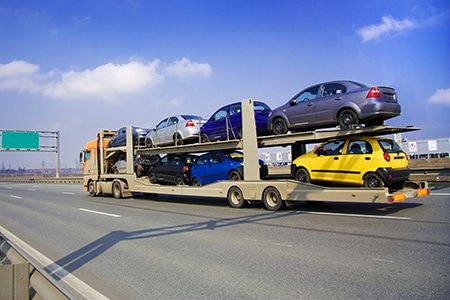Moving to a new country can be an exciting journey, but it also has its fair share of challenges, one of which is transporting your beloved vehicle. Whether you’re relocating for work, study, or personal reasons, the process of shipping your car internationally can be daunting Ship Your Car To Another Country.
However, with proper proactive planning and execution, you can ensure a smooth and hassle-free experience transport.
Research and Planning
The first step in shipping your car to another country is to research the import regulations and requirements of your destination country. Every nation has its own set of rules governing the importation of vehicles, including emissions standards, safety regulations, and customs duties. Make sure to learn about these requirements so there are no complications or delays during the shipping process.
- Gather all necessary documentation, such as the vehicle’s registration, title, and proof of ownership.
- Obtain any required permits or approvals from the relevant authoritiespresent iin both the origin and destination countries.
- Understand the customs duties and taxes applicable to your vehicle’s importation.
Choosing a Reputable Shipping Company
Selecting a reliable and experienced shipping company is crucial for the safe and timely transportation of your vehicle. Look for companies that specialize in international car shipping with a proven track record of successful deliveries.
| Factor | Importance |
| Experience | Experienced shippers have the knowledge and expertise to navigate the complexities of international shipping. |
| Reputation | Reputable companies prioritize customer satisfaction and have a good standing in the industry. |
| Insurance Coverage | Ensure your vehicle is adequately insured during transportation to protect from any potential damages or losses. |
| Shipping Methods | Choose a company that offers various shipping methods (e.g., roll-on/roll-off, container, or air freight) to suit your specific needs and preferences. |
Preparing Your Vehicle for Shipping
Once you’ve selected a shipping company, it’s essential to prepare your vehicle for the journey. This involves cleaning the car thoroughly, both inside and out, and removing any personal belongings from the vehicle. Additionally, consider the following steps:
- Disable the alarm system and remove any removable accessories, such as GPS devices or custom audio systems.
- Deflate the tires slightly to prevent any potential damage during transit.
- Top up the fluids (e.g., engine oil, coolant, and washer fluid) to ensure your vehicle is in optimal condition upon arrival.
- Document the vehicle’s condition, including any existing dents, scratches, or damage, with photographs to avoid any disputes later.
Shipping Methods and Costs
The shipping mode you select will depend on factors such as your budget, desired transit time, and the distance between the origin and destination countries. Here are some common shipping methods and their associated costs:
Roll-on/Roll-off (RO/RO)
Your vehicle is driven onto a specialized ship and secured in place for the duration of the voyage. RO/RO shipping is typically more affordable than container shipping but can take longer due to the ship’s scheduled port stops.
Example cost: Shipping a standard sedan from New York to London via RO/RO can cost around $1,200 to $1,800.
Container Shipping
Your vehicle is loaded into a secure container, which is then transported by ship. Container shipping offers faster transit times and enhanced protection for your car but can be more expensive than RO/RO.
Example cost: Shipping a mid-sized SUV from Los Angeles to Sydney via container can cost between $2,500 and $3,500.
Air Freight
If you need your vehicle shipped as quickly as possible, air freight is the fastest option, albeit the most expensive. This method is ideal for high-value or luxury vehicles, but the cost can be significantly higher than other shipping methods.
Example cost: Air freighting a sports car from Miami to Dubai can cost upwards of $5,000 to $8,000.
Customs Clearance and Documentation
Navigating customs clearance can be one of the most challenging aspects of international car shipping. Upon arrival at the destination port, your vehicle will undergo a thorough inspection by customs officials. To ensure a smooth clearance process, have the following documents readily available:
- Bill of Lading (provided by the shipper)
- Vehicle registration and title documents
- Proof of ownership (e.g., purchase invoice or sales contract)
- Customs declaration forms (completed accurately and truthfully)
- Insurance documents
- Any additional documentation required by the destination country
It’s advisable to work with a knowledgeable customs broker who can guide you through the clearance process and ensure compliance with all relevant regulations.
Ship Your Car To Another Country – Insurance and Risk Mitigation
Shipping your vehicle internationally comes with inherent risks, such as potential damage during transit, theft, or loss. To mitigate these risks, it’s crucial to obtain comprehensive insurance coverage from a reputable provider. Most shipping companies offer insurance options, but you may also consider purchasing additional coverage from a third-party insurer. Movers Company
When selecting an insurance policy, consider the following factors:
- Coverage limits and deductibles
- Types of risks covered (e.g., damage, theft, natural disasters)
- Exclusions and limitations
- Claims process and responsiveness of the insurer
Additionally, ensure that your shipping company follows best practices for vehicle handling and securement during transportation to minimize the risk of damages.
Ship Your Car To Another Country – Finalizing the Delivery
Once your vehicle clears customs and all necessary documentation is in order, the final step is to arrange for delivery to your desired location. Some shipping companies offer door-to-door delivery services, while others may require you to pick up your vehicle from the port of arrival.
Upon receiving your vehicle, conduct a thorough inspection to ensure it has arrived in the same condition as when it was shipped. If you notice any damages or discrepancies, document them immediately and file a claim with the shipping company and your insurance provider.
Additionally, be prepared to complete any remaining registration or licensing requirements in your new country of residence to legally operate your vehicle on the roads.
Ship Your Car To Another Country – Parting Words
Shipping your car to another country can be a complex endeavor, but with proper planning, research, and the assistance of reputable professionals, you can navigate the process with confidence.
Remember to research the destination country’s regulations, choose a reliable shipping company, prepare your vehicle thoroughly, understand the costs and shipping methods, comply with customs clearance requirements, obtain adequate insurance coverage, and finalize the delivery process promptly upon arrival.

